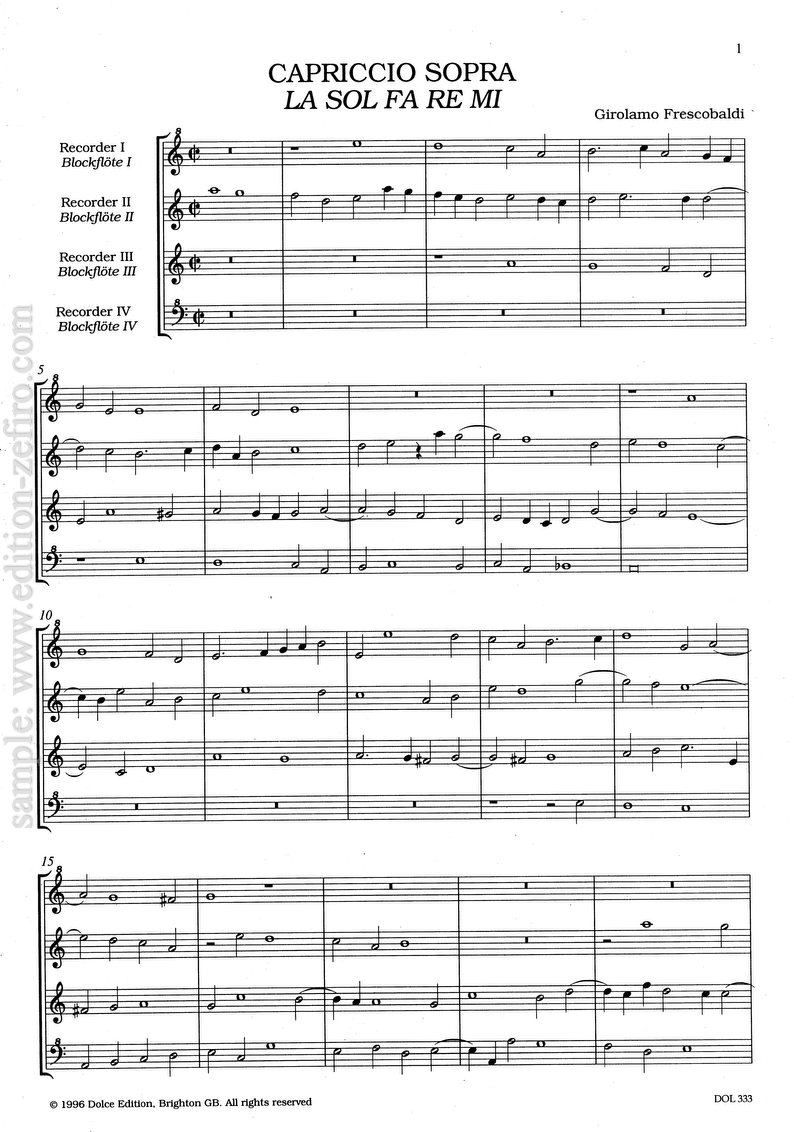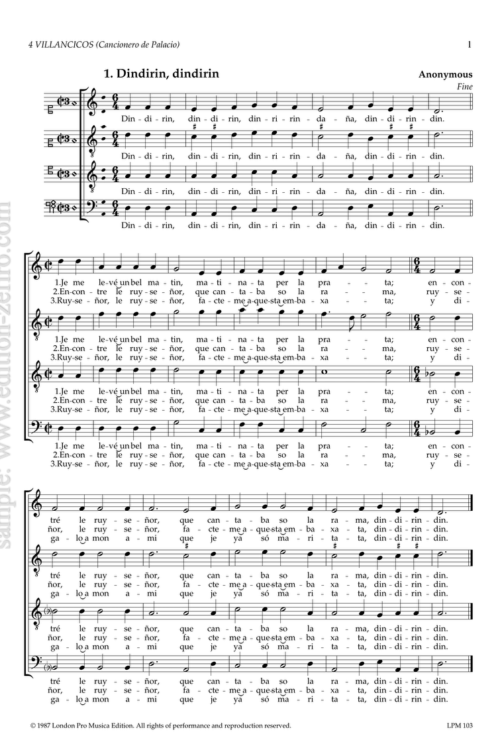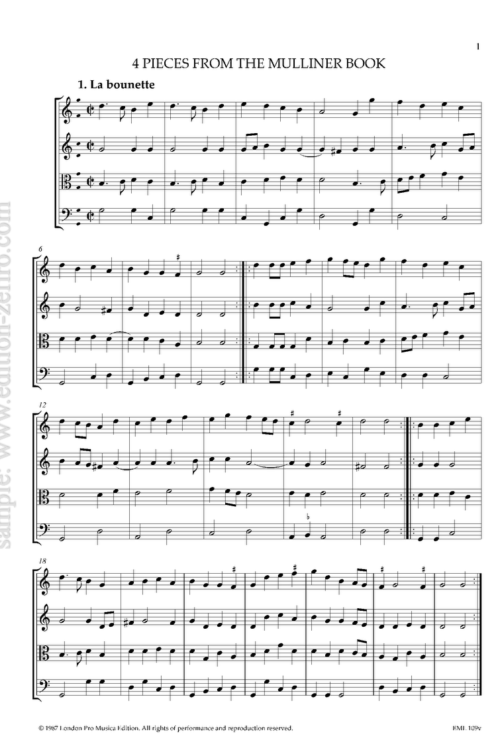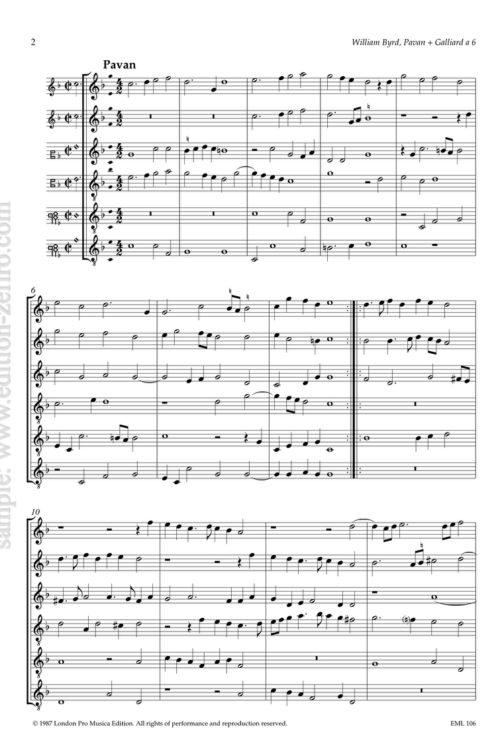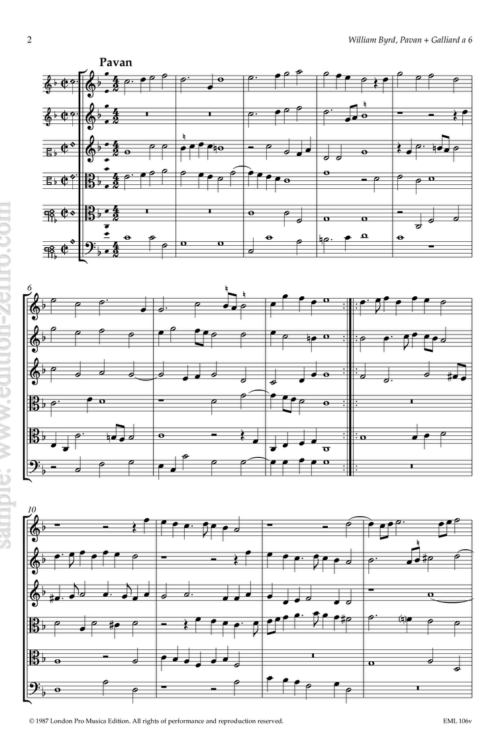One of many pieces based on the formula La Sol Fa Re Mi
(derived from the phrase – “leave it to me”.)
This capriccio comes from Frescobaldi’s Il Primo Libro di Capricci, Canzon Fracese e Recercari fatti sopra diversi soggetti, et arie in partitura, published in Venice in 1626.
This collection, although primarily intended for keyboard, was published in score on four staves, and most of the pieces actually work very well as ensemble pieces. As the title suggests, many of the works are based on a single idea or tune: there is a capriccio built around the two notes of the cuckoo, another round the five-note La Sol Fa Re Mi (A-G-F-D-E) that was treated by so many composers from Josquin onwards and yet another on the popular Spagnoletta melody (DOL323 Spagnoletta ↣).
The present work was written in a tradition going back to the end of the fifteenth century, to Josquin’s Missa La Sol Fa Re Mi, as already mentioned: during the 16th century several composers took up the challenge set by Josquin, and there are fantasies on it by Tiburtino (à3) ↣, Vincenzo Ruffo (à3) ↣, Roland de Lassus (à2) ↣; another 17th century composer to use it was Giuseppe Giamberti, in his duo collection of 1657 ↣. The five-note figure is in fact remarkably productive: for Renaissance composers some of its attraction might have been to do with the fact that it moves down before going up, while most themes of the time tended to do the opposite.
The ideal combination of recorders for these pieces is an alto in G, two tenors and bass. As G altos are sadly not as common as they should be, most players of this part will use either a soprano in C or alto in F: for this reason this part is printed in both octaves.
(Bernard Thomas)


